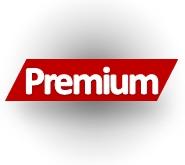Market Data

October 19, 2022
August Shipments and Supply of Steel Products Analysis
Written by David Schollaert
Total US mill shipments of steel products were down in August, slipping to their second-lowest total year-to-date (YTD). Mill shipments have been fluctuating up and down all year with little consistency. August’s shipments totaled 8.04 million tons, a 0.9% decline from July’s 8.11 million tons. Apparent supply also saw a month-on-month (MoM) decline in August, down 1.3% versus the prior month.
This analysis is based on steel mill shipment data from the American Iron and Steel Institute (AISI) and import-export data from the US Department of Commerce (DOC). The analysis summarizes total steel supply by product from 2009 through August 2022 and year-on-year (YoY) changes.
The supply/demand differential remains in place with supply still well ahead of demand, even though both declined in August. Apparent supply (domestic shipments plus imports) in August was just about 11% above domestic shipments totals, while export totals were down 8.5% over the same period. Imports were also lower MoM, down 9.8% in August versus July’s total.
Domestic mill utilization averaged 78.7% through August, down 0.7 percentage points from July’s 79.4% and down 6.2% versus the same year-ago period.
Prices began sliding in May once raw material availability due to the war in Ukraine began to fade and continued to accelerate through August as supply steadily outpaced demand.
SMU’s benchmark hot-rolled coil price declined by roughly $60 per net ton ($3 per cwt) in August. It peaked at $1,480 per ton during the week of April 19 and has been declining since. HRC prices closed out in August at an average of $780 per ton FOB mill, east of the Rockies on Aug. 30. Prices declined throughout the month, though at a slower pace than in months past. The trend has carried on as we’ve reached the midway mark in October.
The earlier price bounce was a reaction to uncertainty stemming from the war in Ukraine and the sanctions against Russia that followed. The market has since settled, pulling prices down. According to SMU’s latest check of the market on Oct. 18, the price for HRC is averaging $730 per ton. Raw steel production, shown below in Figure 1, is based on weekly data from the AISI. It is displayed here as four-week moving averages through Sept. 3.

Monthly shipment data for all rolled steel products and exports are noted in Figure 2. Measured as a three-month moving average (3MMA) of the monthly data, August’s total was 8.03 million tons, down 1.4% versus 8.14 million tons in July. Monthly shipments have increased only once monthly YTD for the 3MMA analysis. Shipments were down 10.1% in August versus the year prior when shipments were 8.93 million tons. The recovery from Covid-related shutdowns just over two years ago was meaningful. August’s shipments were 24% above the post-Covid-related closures in August 2020 but 5% below the same pre-pandemic period in 2019.
All rolled product exports totaled 686,412 tons in August, down 8.5% MoM but 4.5% higher versus the same year-ago period. August’s total is still the lowest mark all year.

Shipment and supply details for all product groups and individual sheet products are noted in Table 1. Domestic supply (shipments and imports) is shown in Table 2. Total supply (a proxy for market demand) as a 3MMA was down YoY in August, and well behind the 36.7% growth seen the year prior when the market was gaining ground lost during the early pandemic-related closures.
Apparent supply is defined as domestic mill shipments to domestic locations plus imports. Mill shipments were down more than 10% and a far cry from the 37.9% growth seen during the year-ago period in the same 3MMA comparison. The recovery has varied significantly among various products. But it should remain relatively on a similar trajectory with declines in domestic output and imports totals as prices are leveling off.
 Total sheet and strip apparent supply is down YTD (Table 2) compared to 2021. Though down marginally over the past three months, total rolled product apparent supply is notably down over the past 12 months on a 3MMA basis, but up marginally over the same year-ago period. Note that YoY comparisons have seasonality removed.
Total sheet and strip apparent supply is down YTD (Table 2) compared to 2021. Though down marginally over the past three months, total rolled product apparent supply is notably down over the past 12 months on a 3MMA basis, but up marginally over the same year-ago period. Note that YoY comparisons have seasonality removed.

The supply picture for HRC, CRC, and HDG since January 2009 as three-month moving averages versus the long-term comparison between flat and long products is shown side-by-side in Figure 3. On the left chart, all three sheet products are displayed. They had experienced some improvement since mid-2020 but have now been trending downward through August. When compared to the same pre-pandemic period in 2019, all three are down. Supplies of cold rolled have seen the largest percentage decline (-14%), followed by hot rolled (-7%), and galvanized (hot dipped and electrolytic) (-1.1%), from the same pre-pandemic period in 2019. In the right chart, note that these are monthly numbers (not 3MMAs), which show the trend difference between longs and flat products including plate.

By David Schollaert, David@SteelMarketUpdate.com






